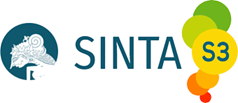Innovative E-Learning Strategies in Mathematics Education: Enhancing Self-Directed Learning and Student Motivation
DOI:
https://doi.org/10.33394/mpm.v13i1.15412Keywords:
e-learning, Moodle, mathematics education, self-directed learning, motivationAbstract
This study employs the ADDIE model (Analysis, Design, Development, Implementation, Evaluation) within a Research and Development (R&D) framework to develop a Moodle-based e-learning platform for enhancing mathematics learning motivation and self-directed among 9th-grade students at SMPN 1 Kota Bima. The research addresses two key issues: (1) Indonesia's low math competency (PISA score: 366) and (2) local findings showing 60% of target students scoring below minimum standards with observed low learning autonomy.Using the ADDIE model, the platform was developed with interactive features (structured materials, automated quizzes, discussion forums, and progress dashboards). Evaluation instruments included pre-post motivation questionnaires (Likert scale), self-regulated learning rubrics, and math achievement tests. Validation by material and media experts confirmed high feasibility (88% and 82%, respectively). Quantitative analysis revealed statistically significant improvements in the experimental class: motivation increased by 13.83 points (paired t-test, p < 0.01, g = 0.72 [high]), and self-directed learning by 17.66 points (p < 0.01, g = 0.64 [moderate]), surpassing the control class. The results demonstrate Moodle’s efficacy in fostering 21st-century skills (4C) through hybrid learning, aligned with Vygotsky’s constructivism (social interaction scaffolding) and Keller’s ARCS theory (attention-relevance-confidence-satisfaction). The study contributes actionable insights for technology-mediated math education, emphasizing structured, feedback-driven, and student-centered design.
Downloads
Published
How to Cite
Issue
Section
Citation Check
License
Authors who publish with this journal agree to the following terms:
- Authors retain copyright and grant the journal right of first publication with the work simultaneously licensed under a Creative Commons Attribution License that allows others to share the work with an acknowledgement of the work's authorship and initial publication in this journal.
- Authors are able to enter into separate, additional contractual arrangements for the non-exclusive distribution of the journal's published version of the work (e.g., post it to an institutional repository or publish it in a book), with an acknowledgement of its initial publication in this journal.
- Authors are permitted and encouraged to post their work online (e.g., in institutional repositories or on their website) prior to and during the submission process, as it can lead to productive exchanges, as well as earlier and greater citation of published work (See The Effect of Open Access).
Â













